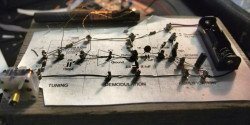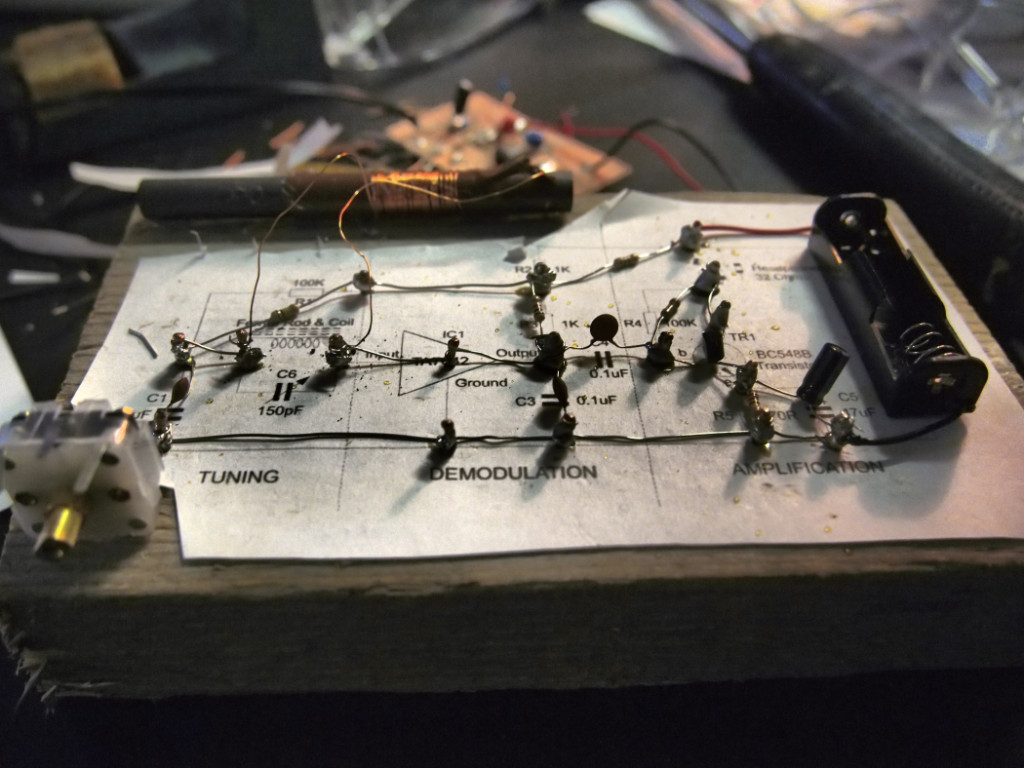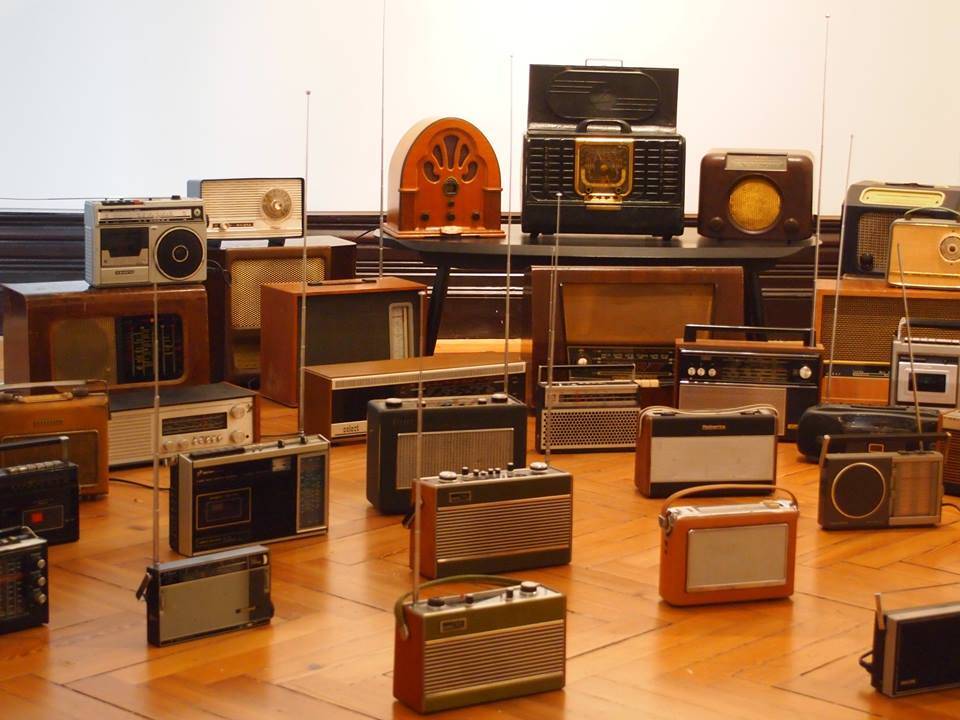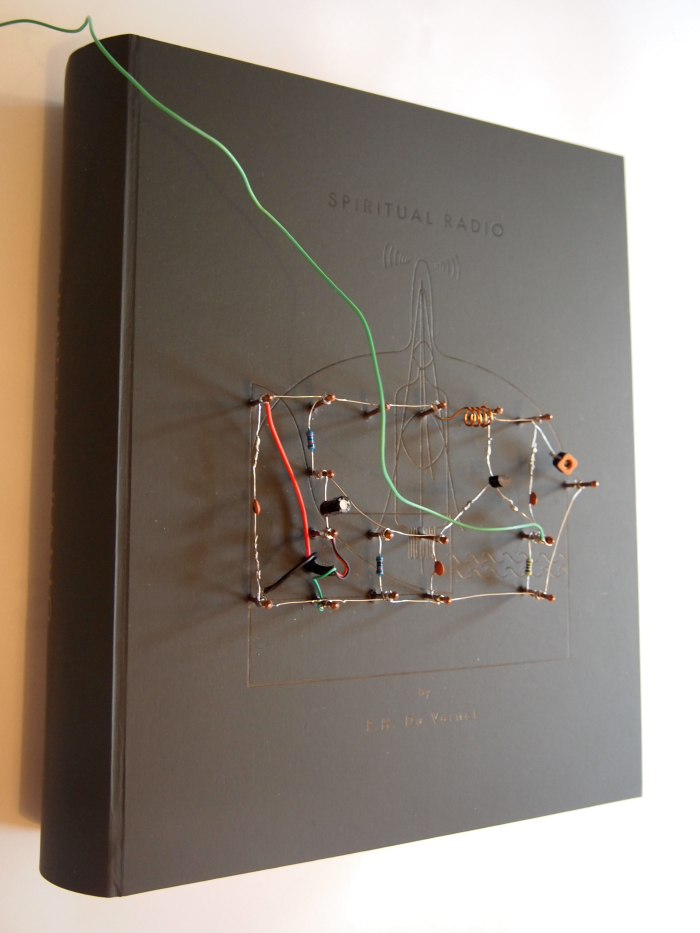Happy New Year and welcome to 2016! The Academic Series for Radio Survivor has been a little quiet over the past few months, but we have a lot of exciting posts planned for this academic term. We’re happy to be back with a two-part interview with Dr. Magz Hall, who is a sound and radio artist and a Senior Radio Lecturer at Canterbury Christ Church University.
In the first part of this two-part interview, Dr. Hall explains how her research is closely connected to a variety of experimental and artistic projects in the field of radio art. By engaging with radio as a flexible, fluid, and accessible medium, Dr. Hall highlights the ways in which radio can engage with communities and inspire cutting-edge research and arts-based practices.
Radio Survivor: Your doctoral research emphasizes the use of radio art in order to help us make sense of radio broadcasting in the context of new media technology. First, how would you describe radio art to someone who might not be familiar with the term or the practice?
Magz Hall: Radio art is best understood as a media art, one which is concerned with the interplay of the relationships between the radio broadcast and its reception. As Dan Lander has pointed out, radio artists often have a desire to reinvent the medium “through deconstruction and or reconstruction, the use of dangerous contents and a refusal to produce works that easily fit into the categories of sanctioned broadcast.”
Also, radio art addresses the medium’s specificity and works from that point. It’s a play between relationships inherit in the medium and, as Gregory Whitehead has written, a “play” in the broadest sense, one which “deals with the fundamental materials of radio, and the material of radio is not just amorphous sound. Radio is mostly a set of relationships, an intricate triangulation of listener, ‘player’ and system.”
Radio Survivor: A number of radio scholars are currently engaged with discussions of the changing nature of radio in the digital age. The fact that you’ve chosen to explore these issues through the lens of radio art is fascinating. What role does radio art play in the digital age and how can it help us to understand radio in this context?
Magz Hall: Radio is a very resilient medium which has constantly moved platforms. Radio artists have also embraced radio in all its receptive forms from AM to FM and online and by doing so, radio art as a practice re-configures and expands what is essentially an experimental art form. Radio art is constantly evolving and reflecting the myriad notions of radio and explores the form.
These days, almost all radio is digitally recorded and edited, so the heart of the production form is digital, albeit one that is still received by the majority of people via analogue means (in the UK interestingly). I am very interested in expanded radio practice and have produced works which cross the lines between analogue and digital reception.
My Switch Off project imagined who would be squatting analogue FM in the future. I produced ten works all of which were a form of post digital practice, where I embraced new and old media.
Radio Jam invited people to play analogue radios to do a live jam across the internet using radio as a performance, whereas Spiritual Radio asked people to hear the book as its own radio station (more on this below).
Radio Survivor: You’ve also been an advocate for community radio and its ability to use radio art in order to explore the limits of the medium. How does radio art advocate for the importance of community radio today?
Magz Hall: Community arts radio is something I have been passionate about since the late 1990s. I was inspired by community stations in Canada, USA, and Australia, which provided space for artists to experiment and share and make work with and for specific communities. Such projects led the way for UK community arts stations Resonance FM, which I helped set up, and Soundart Radio, Hive Radio and Radio Reverb.
In the UK there is still a distinct lack of arts experimentation on the majority of the 200-odd non-arts-based community stations, something Tamar Millen, via the Community Media Association, was trying to address when she ran the Modulate commissions to bring UK artists and arts organizations together with community stations to make new work.
I have also been running Radio Arts. It’s an artist-led arts group that promotes radio arts activity [editor: see our 2013 piece about some Radio Arts projects] . We commissioned fifteen artists to produce Dreamlands, a project that involves new radio art works funded by the Arts Council England and Kent County Council. These works were aired by twelve partner arts stations, including a mix of community, public, and online stations.
(*See the list of Dreamlands commissioned artists and stations that broadcast their works below).
Participants of our hands-on radio arts workshops, in all areas of radio art practice, have gone on to become sound artists, set up their own stations, and run radio arts projects. So this has proven to be a very successful way of engaging people and communities.
For instance, Phonic FM in Exeter commissioned artists to make works as part of a Rugby Stories series funded by the local council. The project came out after its station manager attended one of our radio arts workshops at the Turner Contemporary, which were set up to engage the wider public in radio arts.
Another workshop, Reclaim the Waves, worked with participants who were over the age of 60 at The Tate Britain this year. The workshop resulted in a month long participatory radio art installation, and one of the participants was commissioned to make new sound work about Thames Water as a result of this. So, sharing skills with the public and specific communities has been very fruitful.
Radio Survivor: Your Spiritual Radio project is an excellent example of research creation, in which research is combined with practice. You have explained the project as a “book-radio,” one that must be accessed by finding the right frequency. When the listener discovers the right frequency, she or he will hear Spiritual Radio, a book published in 1925 which explains Archbishop FH du Vernet’s vision of radio technology. What drew you to this particular work and how does the physicality of the book work its way into your project?
Magz Hall: Thanks. I was inspired by the fire-and-brimstone preaching of South London Christian pirate radio stations and was drawn to Spiritual Radio (1925) after researching the book for an earlier project, Radio Mind, where I used parts of Archbishop Frederick du Vernet’s text on telepathic healing via the “law of divine vibration.” That project also drew on Russian Futurist painter and poet David Burliuk’s Manifesto, Radio-Style (1926), which pronounced the dawn of a “radio age.”
Radio Mind was a work that imagines religious radio. It connects a powerful utopian notion, potentiality evoked by reading between these two texts, both of which address radio as an emergent technology and retain uncanny parallels despite their radically divergent perspectives. Du Vernet’s writing on the telepathic power of radio was a point of departure from which to examine how religious imaginary has informed popular perceptions of emergent technology.
For the Switch Off series of works, I wanted to move away from just hearing the installations via headphones or speakers; all the works are heard via radios.
Spiritual Radio was commissioned for a project called unbinding the book, which allowed me to re-imagine what a book could be. In this case, I had the book hand-bound and I made it into a transmitter by hammering nails into the book, so I could build a transmitter and it could transmit the words. The book is a very tactile object which you want to touch, but can’t! You have to listen via a radio. I liked the playfulness of that. It was also a kind of literal death nail, or as the Times described it, a “hardback on life support.” I think that really sums up what the work was about; giving new life to the written form.
*Dreamlands commissioned artists were: Arturas Bumsteinas (LITH), Joaquim Cofreces (Argentina), Iris Garelfs (GER), Anna Friz (CAN), Louise Harris (UK), Olivia Humphreys (UK), Esther Johnson (UK), Langham Research Centre (UK), GX Jupiter Larson (US), Michael McHugh (UK), Carlo Patrao (PORT), Mikey Weinkove (UK), Joaquim Cofreces (Argentina), Gregory Whitehead (USA), Genetic Moo (UK), Magz Hall (UK).
Stations that broadcast Dreamlands: ABC National Radio Australia, RTE, BCB 106.5 (Bradford, UK), Phonic FM (Exeter, UK), Radio Reverb (UK), Radio Papesse (Italy), Sound Art Radio (Devon, UK), Resonance FM (London, UK), Borealis Festival (Norway), Radiophrenia 87.9 FM (CCA Gallery, Glasgow), Wave Farm WGXC 90.7 FM (US).






